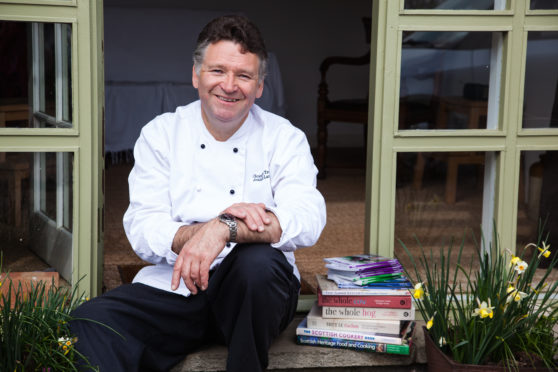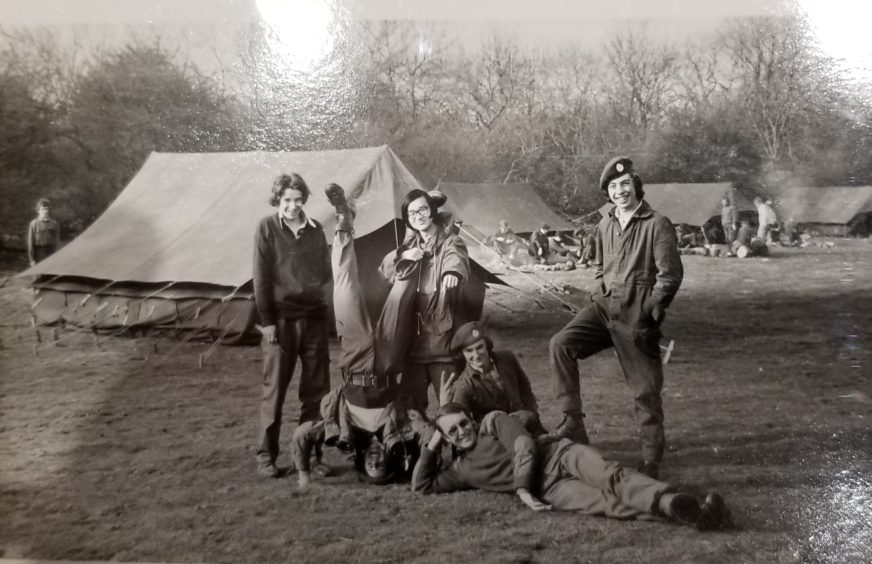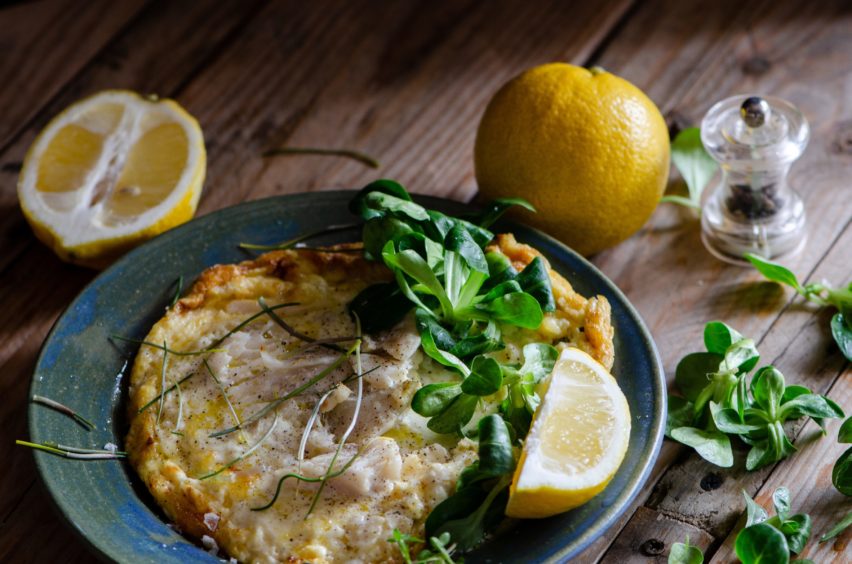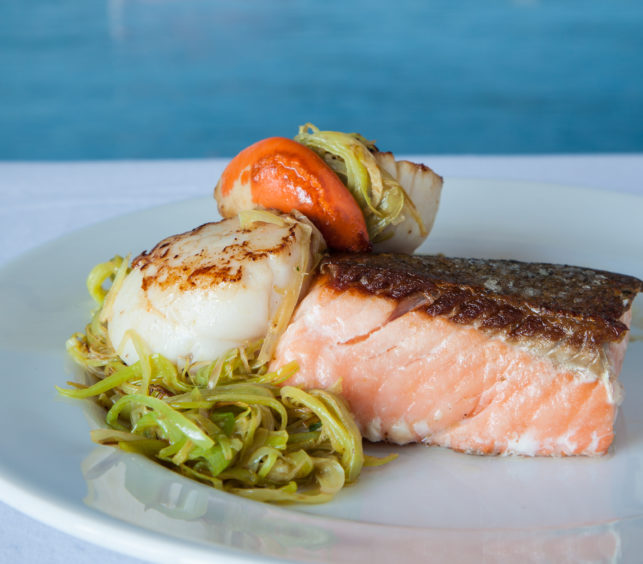In this weekly series, Rebecca Shearer speaks to those who have helped shape Scotland’s food and drink industry, and finds out more about the role that fine fare has played throughout their life and career…
Being Fife’s Food Ambassador is no easy feat but trained chef Christopher Trotter, 62, is perhaps one of the best candidates to take on the role.
The Aberdeenshire-born chef, writer, food consultant and event organiser has contributed a wealth of his knowledge and experience to Scotland’s local food scene and continues to champion the country’s natural larder.
Childhood and teens – Strawberries and black pepper
Despite being born in the north-east of Scotland, the start of Christopher’s culinary journey began once his family moved further south west, into Perthshire.
“My dad was a Church of Scotland minister when I was born, so I spent the first few years of my life in a manse, but really the memories that far back aren’t great because we left when I was about five or six. But I remember more from being in Rannoch,” he said.
“My father taught at Rannoch School so we lived on Loch Rannoch for a while and I remember quite vividly that my mum was always growing things in the garden. She had a great vegetable patch and many of my earliest memories are of the smells from the things she had growing in this garden.
“My most memorable meal from my childhood and into my teens isn’t so much a dish, but I would say strawberries with black pepper. I think strawberries are important as they’re so indicative of the times. Nowadays you can buy a strawberry whenever you want because we can get them from all over the world.
“But for me the best strawberries are the ones that come from Scotland in June, when they’re grown outside and are just the most sweet, succulent fruit you could ever imagine.
“As a child, escaping to the strawberry patch when nobody was looking and nicking strawberries was just one of the things that has always stuck with me. The black pepper bit has to come into it, too – my father always had black pepper on his strawberries, never sugar, never cream, just strawberries and black pepper. We always used to laugh at him but in hindsight – he’s absolutely spot on.
“I had a realisation that Dad was absolutely right – the black pepper brings the flavour out of them. The strawberries are already sweet so they don’t need sugar. I still think it’s extraordinary – that strawberries and cream, a phrase which to all of us just trips off the tongue, is actually wrong.”
Aside from being exposed to good, natural food as a child, Christopher’s first experience of cooking also occurred when he was younger, though it was nowhere near the same calibre of the food he can cook today.
“My mum didn’t just grow everything in the garden but she was also a very good cook. I’d be standing in the kitchen as things come out of the oven smelling, looking and tasting good. You can’t help but want to be a part of that.
“So I gave it a go and the very first thing I ever made was rock cakes, which was an apt name for them – they were rock solid. But nobody ever told me they were horrible.
“I’ve tried hard to forget them, but sadly I can still remember them now!”
20s – Omelette Arnold Bennett
At the start of his 20s Christopher, like many of Scotland’s top chefs, spent some time training at The Savoy Hotel in London.
“I was in the kitchens there for three years and there was a lot going on, as you can imagine. But one of my favourite dishes from then is Omelette Arnold Bennett.
“I’d never made an omelette when I arrived at The Savoy, other than my father occasionally cooking one.
“Usually omelettes are flipped over but the Omelette Arnold Bennett isn’t. It is named after the writer who used to have his plays at The Savoy Theatre, which is right next door to the hotel. Apparently he would pop into the hotel either before or after the performance and have a quick supper and that was how the omelette began.
“It’s basically a smoked haddock omelette, which is why I like it as, to me, smoked haddock is distinctly Scottish. Then there was a cheese sauce over the top. It’s delicious but actually extremely difficult to get right. I used to have to make them a lot at The Savoy.”
As with previous My Meals in Memories chef Kevin Dalgliesh, who also trained at The Savoy, Christopher could see how much of an impact Scottish produce was having on the restaurant scene in London.
“Scottish food was quite prominent in The Savoy. I remember being in the meat department and seeing all the beef in the hotel came from Scotland and on the Glorious Twelfth we had grouse, which came straight from the moors, and the shellfish as well came down from Scotland. It was consistently seen as being the place where all the best produce came from.
“I did my training at The Savoy, then I went to France, then Switzerland cooking in Michelin-starred places, then back to England. But having been to all those countries, I think it was after that I realised Scottish produce is the best in the world as you don’t realise it so much when you’re from here.”
30s – Scallops
Upon returning to England after his travels, Christopher met his wife Caroline and they then got married before embarking on the next stage of his culinary career.
“I’d been working in this hotel where my wife was also working. Then one day we got a phone call from her uncle, who said, ‘I’ve just bought this hotel up in Scotland, would you come and run it for me please?’.
“And so we moved back up north to run the Portsonachan Hotel on Loch Awe. I wasn’t expecting to come back up to Scotland quite so early but I knew we would end up here eventually and my wife was quite happy to move up when we did.
“This would’ve been in the 1980s, but it wasn’t long after moving to Loch Awe that we realised how difficult it was to get hold of produce as there were no natural suppliers. I had to get on my bike and knock on doors to find stuff.
“Then I would start travelling up to Oban once a week and we’d get the most amazing shellfish. I can still remember scallops so fresh that they were still pulsing in your hand and I’d never experienced anything like that before. But the most difficult thing to get hold of was vegetables, which nobody seemed to grow very much of.
“Thankfully I was friendly with some of the chefs in Argyll and a good friend of mine was the chef at Inverlochie Castle in Fort William. We were a gregarious bunch and spoke to each other a lot and they were able to help me out with the supplies.
“But my most memorable dish from this time would have to be those scallops from Oban.
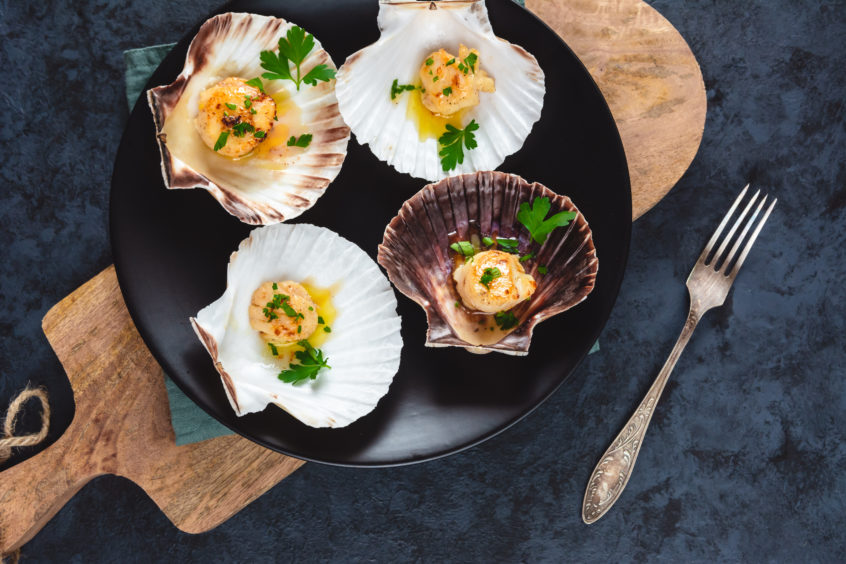
“I’ve created my own dish with them, which I am quite proud of but it’s based on a meal I had back in London. It was in one of the first Chinese restaurants I’d been to and I had crab with spring onion and ginger, which was just a revelation. I’d never tasted or seen anything like it!
“Back then you’d get a crab which would look as if it had been in a road accident – it didn’t look anything special but I will never forget the sweetness of the shellfish, with the acidity of the spring onion and ginger. So when I came back up to Scotland I thought about how I could recreate that using all-Scottish ingredients.
“I decided to substitute the spring onion for leeks as, believe it or not, they are actually more Scottish than they are Welsh, as there are more Scottish varieties of leek than Welsh so I consider it to be very much a Scottish vegetable.
“It’s a dish I still cook to this day and I just love it. The sweetness with the scallop, cut through with the acidity of the leek – I never cared for spring onion much – and the ginger, is just fantastic.”
40s – Salmon with asparagus and chervil
After having experienced much of what Loch Awe had to offer, Christopher and Caroline decided to move to Fife.
“We had two children, two boys, and my wife decided she didn’t want to run the hotel and have two kids to look after at the same time, so we decided to leave the hotel and we moved to Fife.
“We did a few different things at first but then we settled in Upper Largo and I opened a place called Scotland’s Larder.
“Seasonality is part of what I do and that has just been my life since running Portsonachan.
“I think in Scotland we just don’t appreciate how good the food here is, we’re getting much better and realise more now than I think we did back then, but that’s why I wanted to open Scotland’s Larder – as a showcase for Scottish food and produce.
“It had a restaurant with very simple food, a shop and an exhibition/demonstration area and the idea was to have events throughout the year to celebrate the seasons.
“I’d invite well-known people and local producers to help with these. For instance, we had Lady Claire Macdonald come over and do a demonstration on strawberries for me and I teamed up with Cairnie Fruit Farm and we had a strawberry binge!
“But the meal, or ingredient, I want to choose from this part of my life comes from Sandy Pattullo, who grows the most amazing asparagus up in Glamis. Back then he was the only commercial grower of asparagus in Scotland, so we had an asparagus celebration.
“He’d come down with his asparagus and we’d have a dinner. I’d get this very thinly-sliced salmon with the asparagus and then I would do a creamy sauce with chervil. It was all Scottish food and really good quality.”
50s and now – Duck terrine
“My dish for this time of my life is one of my wife’s favourite things that I cook. It harks back to when I worked in France in my early years – this will be the very early 80s – and the chef Michel Guerard. He was part of the staple of French chefs who founded nouvelle cuisine, which was very different to the old-style cuisine I had learned about at The Savoy.
“Michel wrote a book called Cuisine Gourmande which I still have on my shelf and it’s just the most wonderful book. But there’s one dish he simply called duck terrine, but actually it’s wild duck. And basically you make this most incredible puree from the livers of wild duck or chickens.
“He then gets these roasted duck breasts and dices the meat to add to the creamy puree. Then just cooks it and no more. And you’re supposed to serve it with toasted brioche if you’re feeling particularly exotic.
“It’s one of my favourite things. We had our 38th wedding anniversary in lockdown and luckily I had two wild ducks in the freezer and the only thing I needed to get was double cream. So we had wild duck terrine for our wedding anniversary just a few weeks back.”
Recipes
Christopher’s salmon and scallops with leek and ginger
(Serves 2)
It is often hard to get fresh fish at this time of year although we are still in the main season for haddock and whiting. Of the oily fish, mackerel should still be available, and it also goes well with the ingredients in this dish, but I have chosen a safe option of farmed salmon as it’s available year round. Do make sure that it has been sourced from accredited sources such as MSC.
The combination of colourful leeks and warmth of fresh ginger helps keep away the winter chills! I use salmon fillets which are cut from a whole side, but make sure they have been scaled as I like to cook the salmon from the skin side only, it takes a little longer to cook but the skin becomes lovely and crunchy and the flesh is moist, but if there are still scales it’s horrible! Scallops are great just now and this dish really brings out their sweetness.
Ingredients
- 4 small fillets of salmon
- 4 King scallops (muscle removed)
- 2 leeks
- 2cm piece of ginger
- Cold pressed rapeseed oil and butter
- Salt and pepper, to season
Method
- Heat a heavy based pan and add a touch of oil. Dry the salmon fillets and sprinkle the skin side with a little salt and place skin side down in the pan. Cook for about 5 minutes until the skin has really browned. Reduce the heat and continue to cook for another 5 minutes, until just firm to the touch.
- Meanwhile cut the leeks into 5 cm lengths and then cut in half lengthwise and slice thinly into thin sticks.
- Peel the ginger and cut into thin slices then cut into thin sticks as above.
- When the salmon has cooked remove from the pan and keep warm.
- Raise the heat and dry the scallops with kitchen paper and add a touch more oil to the pan and a little butter, sear the scallops on both sides to colour a lovely brown. Set aside and add the leeks and ginger stir to colour lightly and soften, season.
- Serve the salmon skin side up with the scallop and leek mixture.
Asparagus with chervil
(Serves four as a first course)
When I had Scotland’s Larder we used to celebrate the seasons by having a dinner or event in which a seasonal food was enjoyed. Sandy Pattullo from Glamis was the only commercial asparagus grower in Scotland at the time and he came several times over the years. While it has become trendy to grill asparagus, for me the best way is to plunge it into boiling salted water. This is a simple sauce to go with it as chervil is in season at the same time.
Ingredients
- 32 sticks asparagus, trimmed, the bases cut off
- 1 tbsp fresh chervil, chopped
- 4 tbsp cream
- 1 tsp butter
- 3 tbsp dry white wine
Method
- Bring a large pan of water to the boil, and gently tie the asparagus into about three bundles. Add a teaspoon of salt to the water and place the asparagus in base side down, the water should come three quarters of the way up the stems. Cook for about 2 minutes.
- Cut the strings holding the asparagus and allow all the stems to float free (the pan should be big enough for them to lie flat) and simmer for another few minutes. When cooked you should be able to pass a knife through the middle of the stalk easily. Remove the asparagus and drain. place on four plates.
- Take a ladle of the cooking water and place in a small pan with the wine and allow to reduce by half, add the chervil and cream, allow to bubble up and thicken slightly, away from the heat swirl in the butter and check for seasoning, a squeeze of lemon is always good.
- Pour over the tips of the asparagus and serve immediately.
